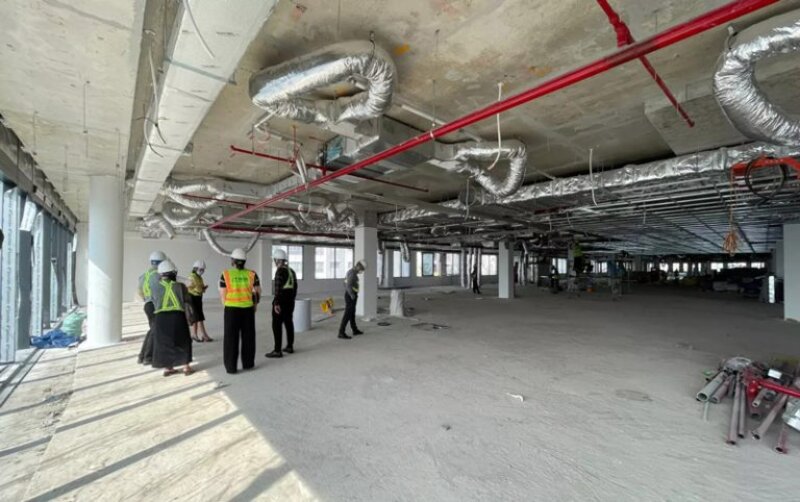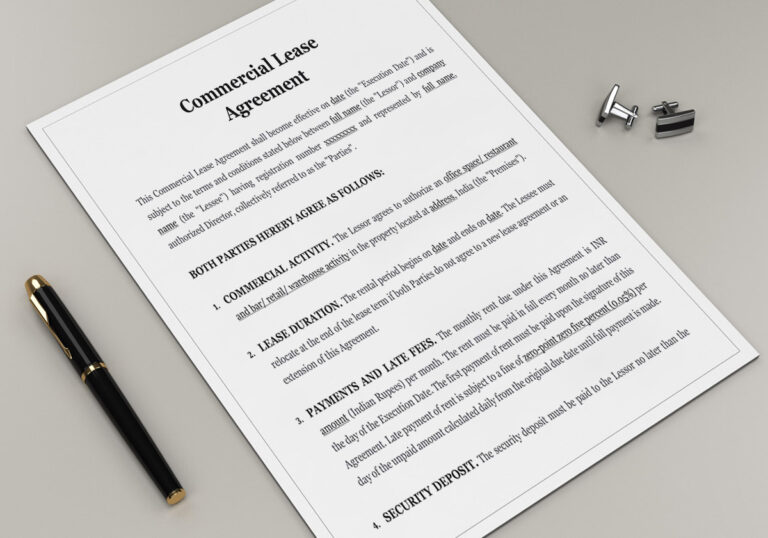How Much Does it Cost to Rent Office Space In VietNam?

When searching for office space, rental costs are always a decisive factor that needs careful consideration. However, in the total operational cost of an office space, it’s not just the rental cost per square meter per month that matters. Let’s explore with Maison Office in this article:
Table of Contents
- What is Office Rental Cost?
- Group 1 – Fixed Costs
- Group 2 – Variable Costs, Based on Actual Usage
- Group 3 – Irregular Costs
- Group 4 – One-time Costs during the Lease Term
- Group 5 – Contract Provisions Impacting Rental Costs
- Validating Office Expenses in Accounting
- Appropriate Allocation of Office Expenses
- Maison Office’s Expense Comparison Report
What is Office Rental Cost?
Office rental cost is the amount that a business must pay to the landlord to use an office space.
Office rental costs are fixed expenses that businesses must pay to ensure the office operates stably
These expenses are usually considered fixed and must be paid periodically, often quarterly or monthly as agreed upon in the initial lease contract. The office rental cost is one of the most significant expenses that a company needs to pay to maintain office operations.
Group 1 – Fixed Costs
1. Office Rent
This is the cost of renting office space, calculated per square meter, and paid quarterly or annually depending on the contract negotiation between both parties.
2. Service Charges
These are fees paid by tenants for services and amenities provided by the building, including reception, security, sanitation, water in restroom areas, lighting and air conditioning in common areas, elevator operation, pest control, and plant care.
Office service fee (office management fee) is one of the fees that businesses must pay to building owners.
Normal service fees do not include: Electricity fees in the rented area, car and motorbike parking fees.
3. VAT Tax
VAT tax on office rental services is the amount that businesses have to pay to the government when renting office space. The VAT rate for office rental services is 10%.
VAT on office rental services is calculated according to the following formula:
VAT = Office rental price * VAT rate
Group 2 – Variable Costs, Based on Actual Usage
4. Electricity and Air Conditioning Charges
These costs are already included in the service charges for Grade A and B buildings. They are typically not included in the service charges for Grade C buildings. On average, if you’re billed based on usage, the cost ranges from $1 to $1.5 USD per square meter per month, depending on usage time, type and condition of the air conditioning system.
5. Electricity Consumption in the Office
Businesses need to pay for the electricity consumed and used in the office space.
6. Parking Fees for Cars and Motorbikes
Some buildings offer free parking spaces based on the leased area, but many buildings do not have this policy. Negotiation is needed when signing the contract.
Group 3 – Irregular Costs
7. Overtime Charges
This is the cost that tenants pay for the additional expenses incurred by the building owner, such as elevator electricity, public area lighting, restroom water, overtime wages for staff, and, most significantly, central air conditioning costs. When working overtime, if the central air conditioning is not used, some buildings charge, while others don’t.
Overtime fees are an important cost to consider when renting an office
There are three methods for calculating overtime charges:
– Calculated per office: For example, 300,000 VND/office/hour
– Calculated based on the rented area: For example, $0.02 USD/m2/hour * Rented area
– Calculated based on equipment: For example, $10 USD/machine/hour. Typically, one machine (Fan Coil Unit) cools an area of 40 – 70m2 depending on the type of equipment.
For businesses that frequently work overtime, it’s possible to negotiate a reasonable package. Alternatively, installing additional localized air conditioning units (if technically feasible) can reduce overtime costs.
Group 4 – One-time Costs during the Lease Term
8. Interior Construction Service Fees
During office interior construction, building owners may waive rent, but they still charge service fees: Grade A and B buildings typically charge $3 – $7 USD/m2/month; Grade C buildings charge less than $1 USD/2m/month. Some buildings only charge for actual electricity consumption as recorded by the meter.
Businesses need to prepare service fees during office interior construction
9. Premises Restoration Fees
All office lease contracts stipulate that when the lease ends, the tenant is responsible for premises restoration costs, except for reasonable wear and tear. This includes demolition and cleaning of all partitions, built-in interior decoration items, and installation.
Group 5 – Contract Provisions Impacting Rental Costs
10. Determining the Chargeable Area
Professional office buildings, Grades A, B, C, only charge for the actual area used by clients. There are three measurement methods:
– Hydrology measurement, within the office space
– Measurement along the wall and partitions
– Measurement along the outer edge of the walls and partitions.
The cost of rented space is the biggest expense that businesses need to pay
Generally, the area under the columns is included in the chargeable area. Some buildings, if the column area is too large, consider excluding a portion or all of it.
11. Impact of Exchange Rate Adjustments on Rental Payments
Most professional office buildings in Hanoi quote rents in USD. Complying with State Bank regulations, rent and service charges are converted into VND for contract signing.
Some buildings have provisions to adjust rental and service charges at each payment period (every 3 months) based on the actual exchange rate at the time of payment. Some buildings do not have this provision; instead, the rent in VND is fixed throughout the contract term.
12. Adjustment of Rental Rates
For a 3-year office lease contract, typically, the building owner will stipulate that the office rental rate will be adjusted after 2 years, either up or down depending on market fluctuations.
Normally, office rental prices will be adjusted depending on the number of years the business renews with the building
In reality, this provision is rarely implemented; building owners also find it difficult to increase rents for fear of affecting all tenants in the building. Moreover, tenants find it challenging to prove that market rents have decreased to request a reduction in rent.
Validating Office Expenses in Accounting
Accounting for office rental expenses is not a simple process. Before renting an office, a company needs to fully comply with legal regulations and accurately identify the expenses involved.
Accounting for office rental costs is very complicated and requires compliance with regulations
To validly account for office rental expenses, each department of the company needs to adhere to and execute the regulations correctly. This includes recording office rental expenses only when there is complete information such as invoices, payment vouchers, and lease contracts.
In the case where a company leases infrastructure from another business, accounting requires detailed information such as lease contracts and payment vouchers. If the company is the lessor, the documentation needs to include proof of tax payments to the local tax authority.
To properly account for office rental costs, you need to provide an office rental contract, payment documents, etc.
Particularly, for businesses with office rental expenses exceeding 20 million VND, value-added tax invoices are necessary. Additionally, rental payments must be transferred from the lessee to the lessor and accompanied by a certificate provided by the relevant bank.
Appropriate Allocation of Office Expenses
Below are some scenarios regarding expense allocation that we would like to share, providing useful information for expense management:
Payment of Entire Expense Upfront:
Based on the lease contract and payment vouchers, the accounting department will determine the amount already paid to the lessor. The specific accounting process is as follows:
– Debit to account 331 (payable to the lessor)
– Credit to accounts 111 and 112
How to account for office rental costs when paying all costs in advance
Prepayment of Office Rental Expenses for Multiple Periods:
In situations where office rent is prepaid for several periods, the accounting process will be carried out in account 242 (prepaid expenses). During this process, the accounting department will evenly allocate expenses to corresponding accounts periodically.
Monthly Payment of Office Rental Expenses:
When the business pays office rental fees or receives monthly invoices, the accounting process is as follows:
– Debit to accounts 154, 627, 641, 642 (depending on the purpose of office rental and credit to corresponding expense accounts)
– If applicable, debit to account 133
– Credit to accounts 331, 111, 112, etc.
How to account for office rental costs when paying monthly
Payment of Office Rental Fees on a Deferred Basis:
When office rental fees are paid or invoices received later, each month the accounting department will record these expenses in account 335 (payable expenses). This action is aimed at monitoring and ensuring the accuracy of expenses in each accounting period.
Maison Office’s Expense Comparison Report
Maison Office provides a comprehensive expense comparison report for all suitable office spaces for business needs. This report helps clients accurately determine how much they will have to spend on their office each month, enabling them to make the most precise rental decisions. We offer this report completely free of charge, sent to all our clients.

Editor and content team manager at Maison Office.
With over 5 years of experience in consulting and extensive content editing in the real estate services and interior design field. Sharing valuable information with customers, partners, and attracting millions of views.













